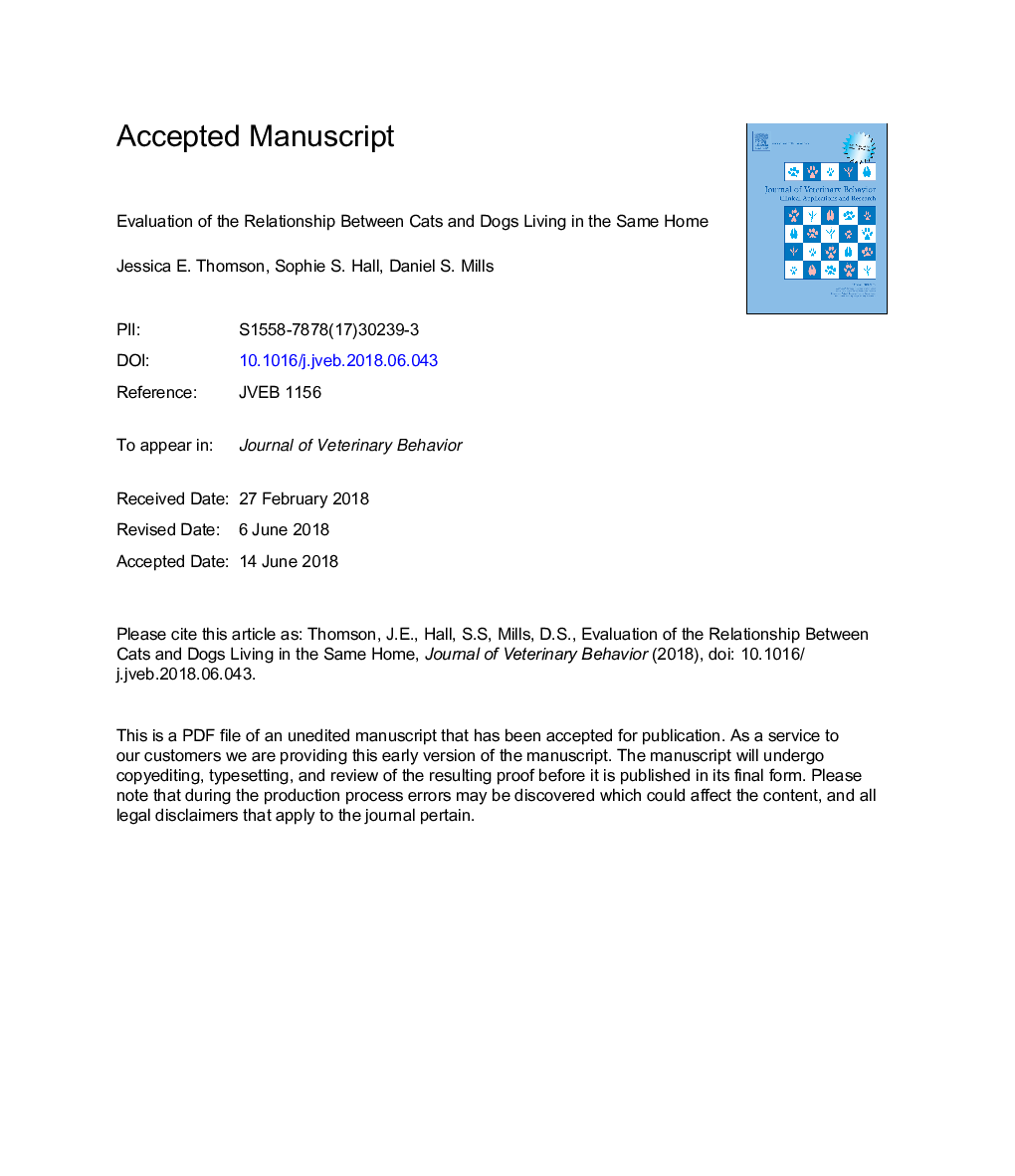| Article ID | Journal | Published Year | Pages | File Type |
|---|---|---|---|---|
| 8483965 | Journal of Veterinary Behavior: Clinical Applications and Research | 2018 | 36 Pages |
Abstract
The number of cats and dogs kept together in many parts of the industrialized world is increasing, but we know little about the typical interactions that occur between these 2 species when they live within the same home. Despite social differences, when conditions are correct, both species are capable of expressing amicability to one another. Although the age at which the 2 species are introduced to each other is thought to be important, there is little understanding of the range of factors that influence the success of cat-dog relationships. Using an online survey of mixed-species homes (n = 748), we assessed owners' perceptions of their cat-dog relationship. Most owners believed that their cat and dog were comfortable in each other's presence and showed amicability in their relationship. Typically, the cat appeared to be the main controller in determining amicability in the cat-dog relationship. Regression analysis revealed that owners' perceptions of amicability were more influenced by “cat factors” than “dog factors,” with variables such as the age at which the cat was introduced to the dog (younger age predicted greater perceived amicability), the cat sharing food with the dog and picking up a toy to show the dog (although the latter was observed by few owners) were included in the final model. In addition, comfortability of the cat was a stronger predictor of amicability than comfortability of the dog; frequency of the cat appearing uncomfortable with the dog was a better predictor for reduced amicability than the dog appearing uncomfortable in the presence of the cat. These results highlight the need to attend to the cat's behavior in particular, along with age of introduction, to promote positive cat-dog relationships.
Related Topics
Life Sciences
Agricultural and Biological Sciences
Animal Science and Zoology
Authors
Jessica E. Thomson, Sophie S. Hall, Daniel S. Mills,
